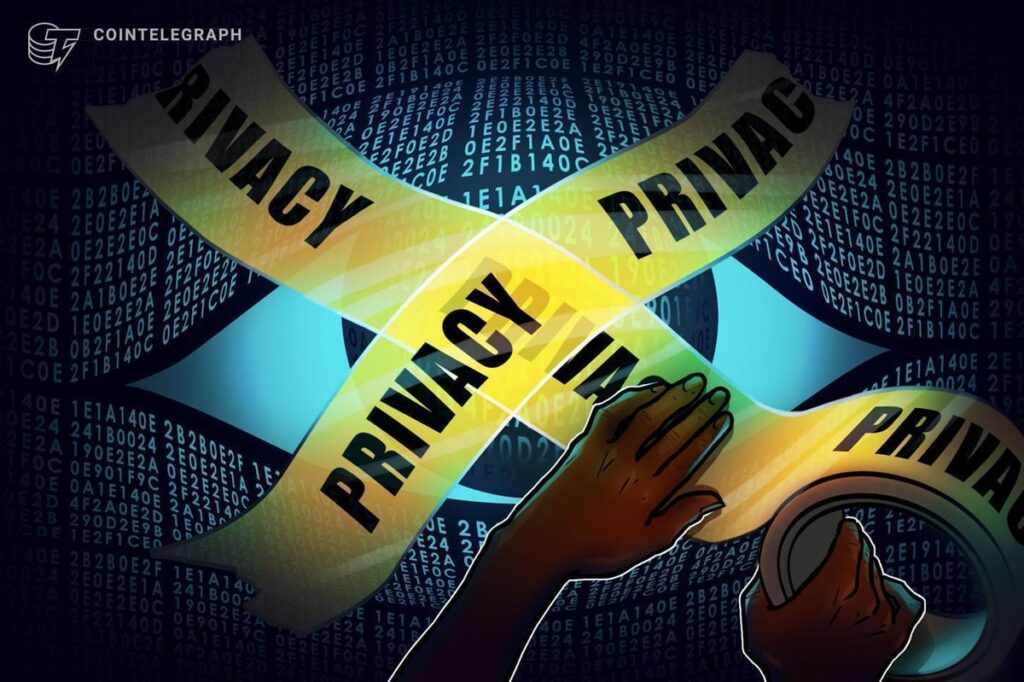Opinion by: Carter Feldman, CEO of Psy
For thousands of years, money changed hands in private. A bronze coin passed from merchant to customer, leaving no record of the transaction. No government official knew what you bought or from whom. No bank tracked your spending habits. This wasn’t a bug in the system — it was how money worked.
Even as banking systems developed, privacy remained the default. When you paid for a beer with a banknote issued by an institution like the Bank of England, there was no compulsion for the tavern to perform real ID verification or Know Your Customer (KYC).
When paper money appeared in medieval China and later in early modern Europe, it functioned as an anonymous, transferable bearer instrument. Ownership changed through physical exchange, not personal identification. For centuries, governments didn’t know what you spent or where, and the state had to rely on audits, witnesses and confessions.
All of this changed relatively recently and within living memory. Credit cards in the mid-20th century started consolidating spending into neat, searchable records. Laws beginning in the 1970s required banks to verify customer identities and report suspicious transactions. International networks standardized transaction messaging across borders. Each step seemed reasonable in isolation: fraud prevention, Anti-Money Laundering and law enforcement. Collectively, however, they built the infrastructure for completely unprecedented financial surveillance.
The 70-year experiment
The internet accelerated everything. Online bank accounts, digital cards and mobile payments capture not just what you buy, but also when, where and from which device. Payment platforms incorporate identity verification and behavioral analytics from the start. They score your risk profile in real time. Convenience was the hook, and surveillance came baked in.
Now, central banks are moving closer to the source. Central bank digital currencies under development in China, Europe and America would let governments issue money directly to users in digital form. Unlike cash, these systems are designed to be traceable from day one. Privacy protections might be promised (as in the case of the EU), but the potential for visibility and control is often structurally embedded in the design.
Today, governments can access your spending history and with whom you transact. They can also freeze accounts at will. Canada did this to Freedom Convoy protesters in 2022. Georgia froze bank accounts of five non-governmental organizations that provided legal and financial aid to arrested demonstrators this past March, prompting Amnesty International to condemn the move as “a blatant attack on human rights.” In Syria, the transitional government ordered banks to freeze accounts linked to former regime figures.
There are morally defensible and intellectually coherent arguments in support of some of these cases. Today’s national security legislation around the world, however, often leaves defendants with little legal room to argue their case. Their accounts may eventually be unfrozen, but the initial punishment cannot be undone.
With bank accounts a lifeline for most people, freezing them amounts to coercion. You can’t expect anyone to fight back while cut off from the basics they need to live. That’s not really a fair fight.
The case for private digital cash
When governments can freeze accounts tied to political protests, the importance of alternatives becomes all the more obvious. Privacy-focused cryptocurrency like Monero (XMR) or Zcash (ZEC) offers a return to the norm. It enables direct, permissionless exchange between individuals without requiring identity checks or centralized oversight. This is, essentially, a kind of digital return to what coins and cash once provided.
Related: 5 privacy coins that are pumping this week
Yet somehow, in our upside-down discourse, privacy-preserving crypto is labeled an aberration. Critics call it suspicious, radical and dangerous. The 70-year experiment in financial surveillance is treated as normal. The thousand-year tradition of private transactions is treated as weird.
Critics often frame privacy coins as tools for illicit finance. This misses their broader social utility. Just as cash enables lawful, private purchases, private crypto preserves freedoms in increasingly monitored digital environments. In countries with authoritarian regimes or unstable banking systems, private digital cash can be the only way to safely store and transfer value.
Society already tolerates private transactions in cash without criminalizing the medium itself. It doesn’t ban 50-pound notes because someone might misuse them. The same logic should apply to privacy-preserving digital assets. Rather than being seen as threats, they should be treated as modern equivalents of physical money: useful, lawful and consistent with centuries of financial tradition.
While crypto can certainly be a way to challenge central bankers, its deeper value lies in preserving the kind of private exchange that existed for millennia before our surveillance-based money took over.
The real aberration isn’t private crypto; it’s the assumption that every financial transaction should be visible to third parties, subject to algorithmic analysis and vulnerable to political interference. We’re not asking for special privileges; we’re defending norms that existed until roughly 1950.
When critics label privacy coins suspicious, they argue that natural human commerce is inherently criminal. They’re treating the thousand-year tradition of private transactions as deviant and the 70-year experiment in financial surveillance as normal. Those defending the current status quo should take a longer look at history.
Opinion by: Carter Feldman, CEO of Psy.
This article is for general information purposes and is not intended to be and should not be taken as legal or investment advice. The views, thoughts, and opinions expressed here are the author’s alone and do not necessarily reflect or represent the views and opinions of Cointelegraph.

